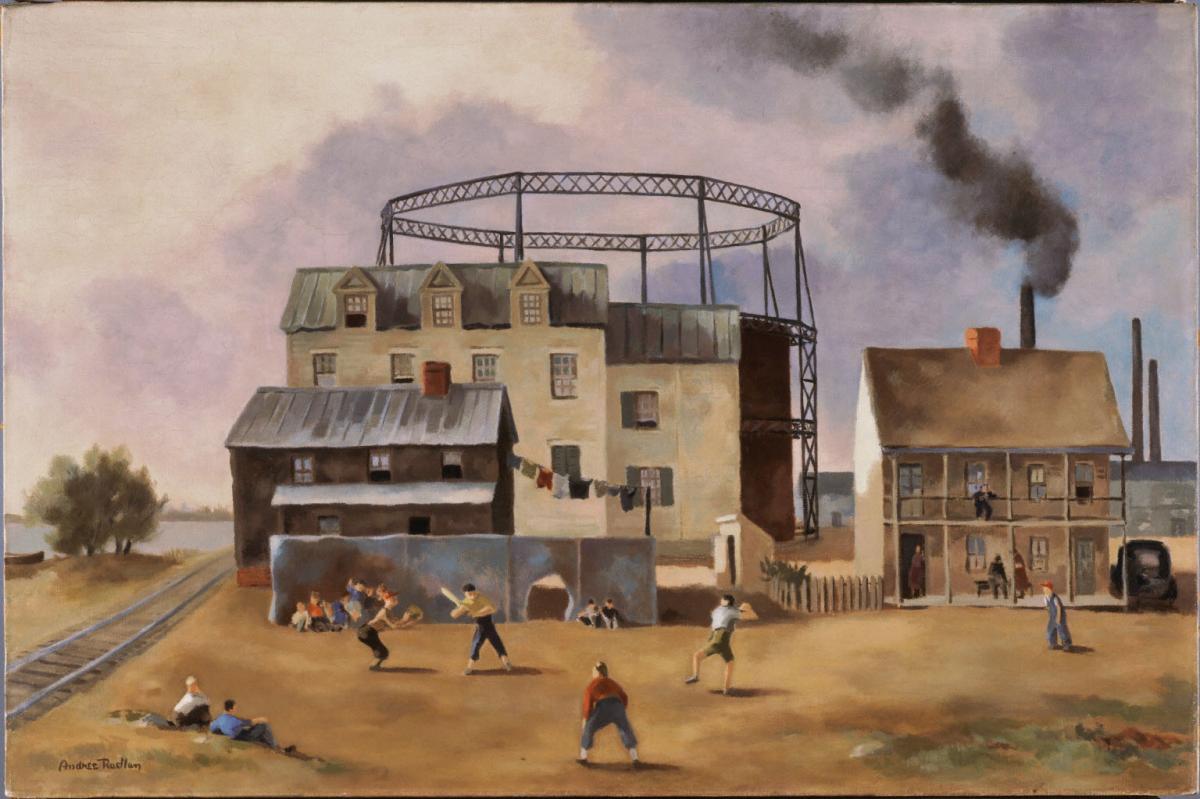The Wind-Up
Andrée Ruellan ( not dated )

Andrée Ruellan’s career spanned over nine decades; when she was just nine years old Robert Henri invited her to participate in a group show in Manhattan’s East Village. Her work for most of her life closely reflected the urban realism she learned as a young art student, though she did experiment with abstraction later in her career. Her subject matter tended to be highly figurative and often included working-class people engaged in everyday activities. After spending most of the 1920s in Paris, she returned to the United States in 1929, and like her colleague Doris Lee, settled near Woodstock, New York, an artists’ colony 100 miles north of Manhattan. She lived seasonally in New York City and often took extended road trips, especially spending time in the American South.
In The Wind-Up, Ruellan emphasizes the solid three-dimensional forms of the buildings that dominate this picture of a small factory town with its spewing smokestacks adjacent to the river and the single railroad track that connects the community to the outside world. Ruellan invites the viewer to see the human side of this industrial world. Her title, The Wind-Up, focuses attention on the neighborhood baseball game being played on the dirt field behind the factory workers’ houses. In this genre scene of American factory life, Ruellan contrasts the liveliness of the figures with the immobility and solidity of the architecture. He palette reflects the gritty industrial building—grays and browns—though she subtly adds not only color but a sweetness to the painting with her pastel-colored sky, again juxtaposing the intrusiveness of the building against the fluidity of the sky. Although critics in the 1930s associated her with the American regionalist painters, Ruellan was always committed to the idea that art should represent real people rather than be overtly nationalistic in spirit.